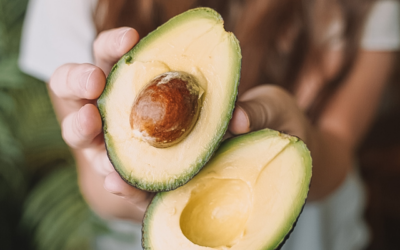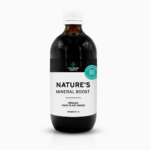Human survival has depended on the adaptation of the environment and the food available in that environment.
Before ultra-processed foods and grocery stores, if you lived in an extreme climate (polar regions, deserts and high altitude) where plants did not grow well, then you had to survive on sea life, land animals and the produce of these creatures like roe, dairy and eggs.
If you lived in a not-so-extreme environment where plant and animal life was prolific, then you had the choice of eating just plants or a combination of plants, animals, fish and the produce of animals.
Through culture and tradition (and some tribes saying that plants speak to them) we have figured out the art of cooking, fermenting, soaking and sprouting to, firstly, make the food more palatable and, secondly, render the food safe to eat.
This is seen clearly with the native Australian food landscape. Some foods are so toxic that if you consume them, they can make you sick and eventually kill you (or kill you straight away). Through thousands of years living on the Australian continent, our indigenous first nations people have, through their culture and tradition, learnt to eat many foods that were thought to be poisonous by the settlers – by the simple art of correct preparation, all the way from soaking the food in running water for six weeks, to the simple soaking, washing and cooking of a food.
Nardoo is a great example of this. The Australian explorers Burke and Wills did not take heed to the way this seed was prepared by the indigenous people, instead they ate it raw. Nardoo has an anti-nutrient which stops the absorption and utilisation of vitamin B1. When it is soaked, washed and cooked, it can be made into a porridge or bread. Burke and Wills died on the banks of the Cooper River, which never dries up and is filled with fish and wildlife (animals and birds). There was plenty of food and water, but these two fated explorers made themselves weaker and weaker by eating raw nardoo which eventually ended their lives.
Food Intolerances – Lectin ‘the New Bad’
We are seeing more and more people becoming intolerant to food, mainly plant-based foods and more particularly legumes, grains and nightshades.
This would have been a real problem for the Hindu civilisation over their 5000 years existence as their mainstay of eating was grains, legumes, nightshades and dairy. But the Hindu also had a culture and tradition around their food preparation.
Let’s face it, a raw grain, raw potato or raw legume is pretty tasteless. So, was it the use of fire and cooking mixed with spices that made these foods taste better (which was the impetus for the cooking methods used) or did people have the realisation that these foods made them sick when they were eaten in their raw state?
Lectin is the new buzzword in the health industry. In fact, a reader asked me recently: ‘Are lectins bad for you?’
Funnily enough, lectins are found in grains, legumes and nightshades. Lectin is a protein attached to a carbohydrate. The plant uses lectin to hold minerals. It’s resistant to acidic environments so protects the plant and, for the most part, is an important part of the plant’s survival.
One lectin in particular which needs to be addressed is contained within the red kidney bean and is called phytohaemagglutinin. If the kidney bean is not cooked or not cooked properly, this lectin has the ability to cause red blood cells to clump together. It can also produce stomach upset, diarrhea, nausea and vomiting. Milder effects may be bloating and gas. That’s why you have never seen red kidney flour – it would be a dangerous food item.
The lectin phytohaemagglutinin can be rendered inactive by the simple act of soaking overnight and cooking over several hours. In fact, most lectins become inactive and release their hold on valuable minerals through this method of cooking.
When I was a vegetarian and there were no canned legumes, I would soak my legumes and grains overnight in water, sea salt and a dash of vinegar. Then in the morning or later that night I would put them on a rolling boil, simmering for up to two hours. With those legumes I could make any vegetarian dish I wanted – and make it taste amazing simply by using spices, seeds, nuts and ghee.
Another way to decrease the amount of lectin in a grain or legume is to sprout it. That was another thing I would do as a vegetarian. I always had a jar of sprouts on the kitchen bench. Every day I would rinse them and watch them grow, then after three to five days of sprouting I would add them to my salads. And of course fermentation can also release lectins, that’s why sourdough loaves made from legumes and grains like the biblical Ezekiel bread was part of culture and tradition (and another food I prepared on a weekly basis as a vegetarian).
Modern food processing does not always allow for these well-tested traditions in cooking processes, therefore allowing more lectins to be in the food chain and more people thinking that lectins are dangerous. Add to that the new wave of plant-based protein powders processed from legumes and grains (eg soya, pea, rice, lentil), that are then made into fake meats, fake cheeses and fake milks. In the process of making these powders, are lectins rendered inactive and are the minerals that are bound released? These are questions that the food industry is not interested in. They are there to make fake foods as cheaply as possible, with incredible taste using flavours and enhancers, earn profits and dupe an unsuspecting public.
Let’s now add another layer onto the problem. The state of the modern human’s gut and microbiome. With antacid medications, antibiotics, agricultural chemicals that are patented antibiotics (glyphosate) and the ultra-processed food many people eat, there has been a reduction in diversity of the microbiome and thus a change in integrity of the gate keepers in the gut lining. This in turn causes all sorts of food sensitivities leading not only to gut issues but total health decline. This decline is evident in chronic disease growing across all age groups at an unprecedented rate.
Lectins are not the problem, the problem is that we no longer prepare grains, legumes and nightshade foods properly, and with the increasing amount of people with gut issues, these poorly-prepared foods deliver lectins to an unsuspecting population – and the blame is on the lectin rather than the how!
Culture and the tradition of how we prepared food enabled humans to survive and adapt to foods and landscapes. Instead of throwing these traditions out, it would be prudent that we go back to tried-and-tested cooking methods in order for us to have better digestion, and therefore better health.
Sometimes in order to heal the gut and microbiome we must remove foods from the diet to help the gut increase good bacteria and diversity and then we can introduce the foods back into the diet.
If you believe you are having a problem with legumes, grains and nightshade foods, I suggest you either do the Fat Loss Protocol (if you also have some weight to lose) or the Healthy Keto Way. Both of these programs eliminate common problematic foods and then reintroduce the foods back into the diet. Most people seem to tolerate the foods once they have done some healing. For those that don’t, they may need some extra time to heal the gut (through a consultation with a nutritionist).
To vilify a food or part of a food that has been a part of the diet for so long is something that we have been doing since food science started. Saturated fat, gluten, salt, sugar have all been vilified and lately I sound like a broken record. It’s not the lectin, it’s the how. It’s not the cow, it’s the how. It’s not the grain, it’s the how. It’s not the legume, it’s the how. It’s not the nightshade food, it’s the how. It’s not the salt, it’s the how. It’s not the carbohydrate, it’s the how.
For 40 years I’ve said the same thing: eat real food, eat foods that have been grown traditionally without chemicals and take heed to the culture and traditions of cooking processes.
Cyndi O’Meara
Founder, Changing Habits








I love reading your informative, no nonsense articles Cyndi and I totally agree!